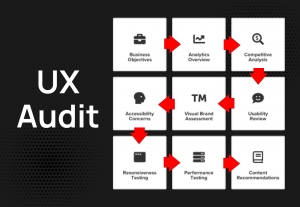As businesses seek to improve efficiency and scale operations, many use cloud solutions to meet their computing needs. Google Cloud Platform (GCP) is a potent tool for companies leveraging the cloud's vast potential.
Partnering with an experienced cloud solutions provider like DoiT International can smooth the transition, ensuring that businesses harness the full range of capabilities GCP offers. This post delves into the essential strategies, tools, and best practices for migrating to Google Cloud, helping organizations confidently and precisely navigate the journey from on-premises systems to the cloud.
Understanding the Migration Process
Switching the services to Google Cloud encompasses several crucial points that call for considerate planning and execution. This is done by fully evaluating your existing architecture, where applications and data are located, to plan the most appropriate migration to the cloud. By conducting this assessment, we'll be able to determine which workloads can be ported in the same way or as a lift-and-shift process, which ones need modifications before migration (improve-and-move), and which should be refactored following a cloud-native architecture.
Strategic Planning: The Foundation of a Successful Migration
For a successful migration to Google Cloud, it is essential to develop a comprehensive strategic plan incorporating the scope, timeline, budget, and architecture plan at the end of the journey. Businesses will need to set goals for their cloud deployment process so that they can see progress and whether they are on the right track regarding growth and innovation.
Establishing a Cloud Governance Framework
First, it is necessary to develop governance frameworks for the cloud to properly guide decision-making at the beginning of the migration process. The framework should take into consideration compliance, security, cost savings, and operational matters. Effective governance takes responsibility for a secure cloud network, cost control, and perfect infrastructure functioning.
Choosing the Right Tools for Migration
Google Cloud presents a toolset that is, in its nature, able to guide the customer through the migration process seamlessly. These include:
- Migrate for Compute Engine: This software, formerly Velostrata, provides a satisfying tool for automatically moving VM workloads into the cloud-based Google infrastructure.
- Transfer Appliance: This tool is best suited for data transfers with high-capacity data. It was developed to securely transfer large data to Google Cloud without harming network costs or Google Cloud costs.
- BigQuery Data Transfer Service: This service enables data transfer to BigQuery quickly without manual interaction, saving time and reducing the burden of transferring huge datasets used for analytics.
Best Practices for a Smooth Transition
The best practice is bearing down downtime and a smooth process, which is paramount during the migration. These practices include:
Performing Thorough Testing
Testing is a critical component of any migration strategy. Before fully migrating, conduct comprehensive testing in a staged environment. This includes performance security and compliance testing to ensure the new cloud environment meets all necessary standards and regulations.
Incremental Migration Strategy
For large enterprises, an incremental migration strategy is often safest. Moving smaller, less critical applications and workloads to the cloud first and gradually scaling to larger systems. This approach allows IT teams to troubleshoot and optimize the process progressively.
Leveraging Professional Services and Partners
Working with Google Cloud-certified partners can provide access to expert advice, enhanced support, and additional invaluable resources during migration. These partners have extensive experience in cloud deployments and can offer customized guidance critical to ensuring a smooth and efficient migration.
Conclusion
Migrating to GCP for a beginner can be hectic, but it becomes easy when suitable approaches, tools, and policies are used at each stage. Thorough planning, including understanding Google's Cloud offering and collaborating with professional partners, can mitigate risks and enhance the system's efficiency and effectiveness, reducing implementation costs and errors.
Though cloud technology is ever-changing, it will remain crucial for businesses to know what is happening and be able to adapt to make a success out of it. By following these directions, businesses have a firm path to Google Cloud; whether on or coming from there, these firms will always be ready and capable of the digital age's challenges.






